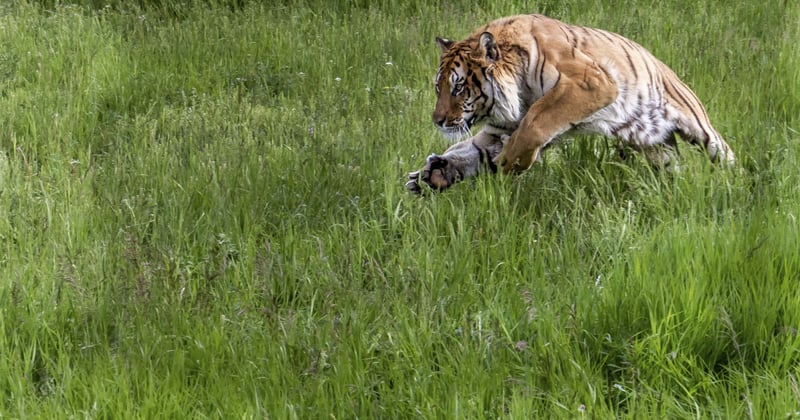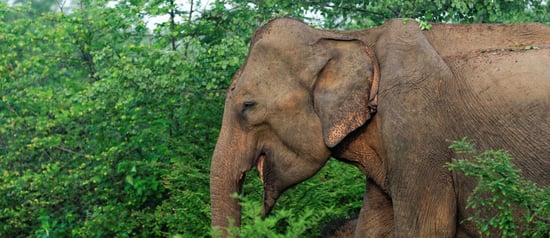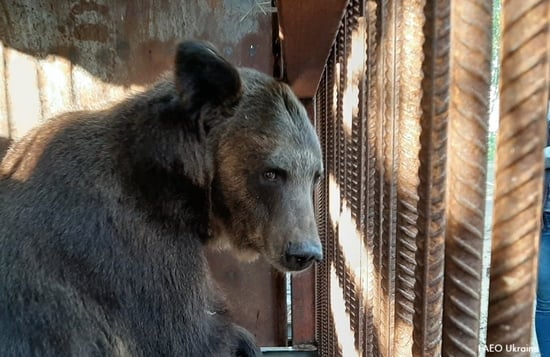
Five things you didn’t know about tigers
News
These majestic animals have stealthily padded through the earth’s jungles, grasslands and icy landscapes for more than 2 million years. And their image, symbolising power and fierceness, has been used by kings, countries and the military for centuries.
Top image: iStock. by Getty Images
But did you know that tigers also have a softer, highly sensitive, and protective side and are great swimmers too? Here’s a close-up look at our planet’s biggest wild cat…
Thinking big
Tiger size varies between species but some adults can grow up to 3m in length and nearly 300kg in weight. But this great size doesn’t slow tigers down; they can move as fast as 45kmph to catch their prey.
Because tigers are big animals, they need big territories. They roam up to 32km a night hunting for their prey which can include large animals the size of buffalo, wild pigs and antelope. They are strong swimmers, helped by their large webbed paws and muscular bodies. Tigers have been recorded swimming up to 29km across rivers.
Getting together
These iconic creatures are naturally solitary animals. Adults only interact in the wild to fight to defend their territory, or to mate.
Tigers let each other know they are ready for mating by roaring and calling. This is a noisy business as a tiger’s roar can be heard from 3km away. But after they respond to each other’s calling, males and females spend several days together and are known to frequently mate throughout this time.
Cub care
Female tigers are highly protective mothers. They work hard to keep their cubs safe from danger, such as attacks from other wildlife like snakes, wolves or even other tigers.
A tiger pregnancy lasts approximately 3.5 months and an average litter contains 2–3 cubs, although can contain up to six. Each cub has its own unique pattern of colours and stripes on its fur and skin. No two tigers will ever look the same.
Tiger mothers prepare for their cubs’ births by making dens in crevices, caves, dense grasses or hollow trees. They are so good at hiding and protecting their babies that few scientists have ever seen very young cubs in the wild.
For around two months, a mother tiger keeps her cubs in the den and rarely leaves them as they depend on her milk. When she has to move them, she carries them in her mouth by the scruffs of their necks. Her gentleness at this time is extraordinary considering that her powerful jaw can exert nearly 500kg of force.
Booming big cats: a tiger’s roar can be heard up to 3km away. Credit: iStock. by Getty Images
Wild decline
There are five subspecies of tiger left in the world – the Bengal, the South China, the Indochinese, the Sumatran and the Siberian. Sadly, three subspecies of tiger have become extinct – the Caspian, Bali and Javan.
Today, fewer than 5,574 tigers remain the wild. Just 100 years ago, there were 100,000 living all over Asia, but hunting and habitat destruction has driven them to near extinction.
Captive cruelty
Every day tigers suffer through breeding, capture, poaching and captivity, transportation and training. Approximately 12,000 are kept in cruel captive captions worldwide. Some are bred for their body parts for use in traditional Asian medicine, clothing, jewellery and ornaments.
Others are forced to live and perform in dismal captive conditions for our entertainment - including being used as a ‘selfie’ prop. And through cruel captive breeding cycles, mothers and cubs endure unimaginable distress. Cubs are subjected to mishandling, early separation – just two or three weeks after birth so they can be fed and raised by humans, and other appalling treatment.
Moving the world for tigers
With your help we will stop the cruelty that the wildlife trade inflicts on tigers. With your support we can keep these magnificent animals in the wild where they belong.
Today, fewer than 3,900 tigers remain the wild. Just 100 years ago, there were 100,000 living all over Asia, but hunting and habitat destruction has driven them to near extinction.
Our wildlife work
Around the world, wild animals are being exploited. They’re hunted down, trapped and farmed in captivity, all to be sold and abused for entertainment, medicine, fashion, pets and products.
Will you protect animals?
Every animal deserves a life worth living – from captive lions used for trophy hunting to mother pigs in cages in factory farms.
 Strong swimmers: tigers can swim up to 29km across rivers. Credit: iStock. by Getty Images
Strong swimmers: tigers can swim up to 29km across rivers. Credit: iStock. by Getty Images
